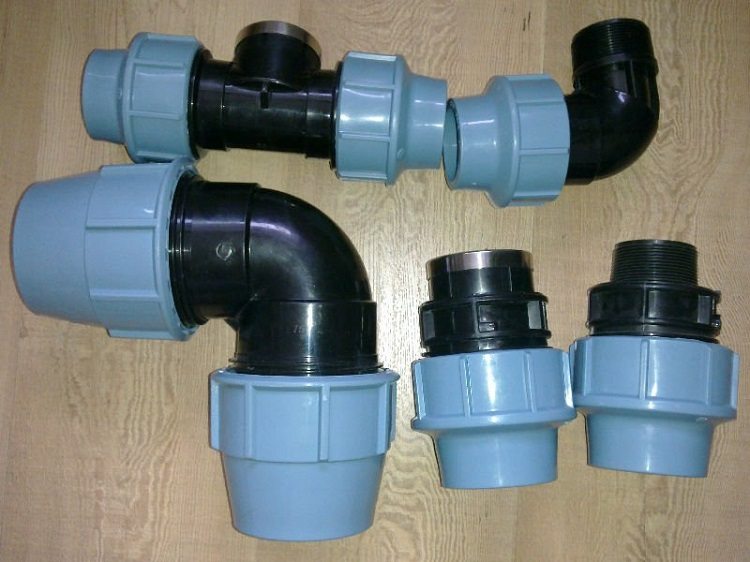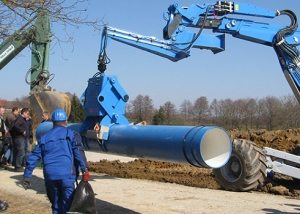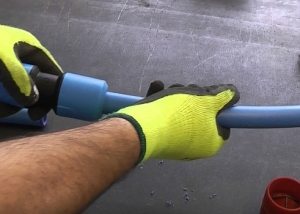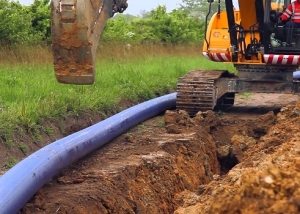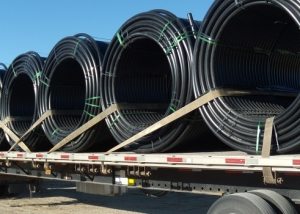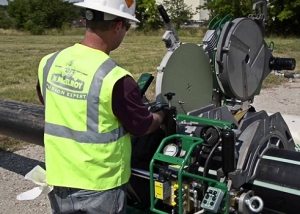Polyethylene pipes for water supply are a relatively new type of communications, which replaced steel and cast iron products. The range of applications for such products is quite wide: drinking water supply, water supply and irrigation in summer cottages, pressure sewer, agricultural and irrigation conduits, fire water supply, drainage systems.
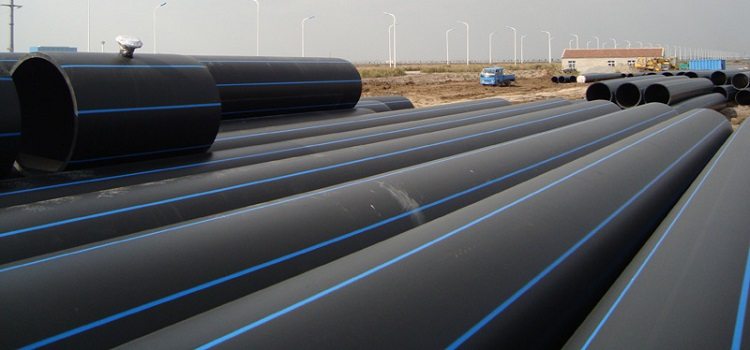
Polyethylene pipes - one of the most popular products for the installation of drinking water and technical
Content
Distinctive characteristics of polyethylene
Technical characteristics of polyethylene pipes for water supply largely depend on the properties of the materials from which they are made. Products are manufactured from PE 63, PE 80 and PE 100. Polyethylene PE 80 is less dense, durable and has a lower melting point. However, it is more plastic and resistant to various types of deformation.
Polyethylene PE 100 is more rigid and dense in structure. It is tensile, but brittle at high temperatures.
Table 1
| Characteristic | Steel | Cast iron | PND | unit of measurement |
| Weight of 1 linear meter of pipe with a diameter of 16 cm | 17,5 | 28,1 | 3,77 | kg |
| Lifetime | about 15-25 | about 80 | about 50 | years old |
| Chemical resistance | steady | no sustainability | high stability | — |
| Biological stability | medium stability | low stability | high stability | — |
| Wear resistance | middle | low | tall | — |
| UV interaction | permeable | not interacting | collapses | — |
| Tensile Strength | very small | very small | 20-38 | MPa |
Such characteristics make the HDPE pipe for water supply particularly attractive to the consumer.
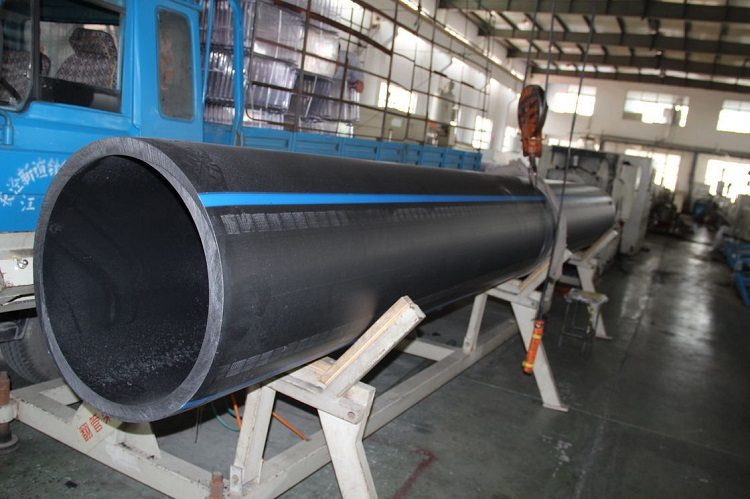
The characteristics of the pipes depend on the raw materials used for their production: the most durable products are obtained from PE-100
Advantages of a polyethylene pipe for water
Polyethylene pipes for cold as well as hot water supply have a large number of advantageous characteristics that distinguish them from similar products from other materials. Manufacturers of polyethylene pipes for water note that their service life is more than 50 years. Such products are resistant to water hammer due to the ability to stretch a little under significant loads.
The polymer does not enter into an electrochemical reaction, which explains the corrosion resistance of water pipes. In addition, it is not exposed to chemicals, due to which it becomes possible to use them as underground pipes.
Note! Almost all pipes made of this material do not require additional thermal insulation when performing underground laying.
Since plastic is an environmentally friendly material, it is possible to use such products to supply drinking water.
Light weight and availability of auxiliary elements greatly simplify and speed up the installation of a cold (or hot) water supply system. In the process of manufacturing products, polyethylene is subjected to structuring, which gives the product greater reliability.
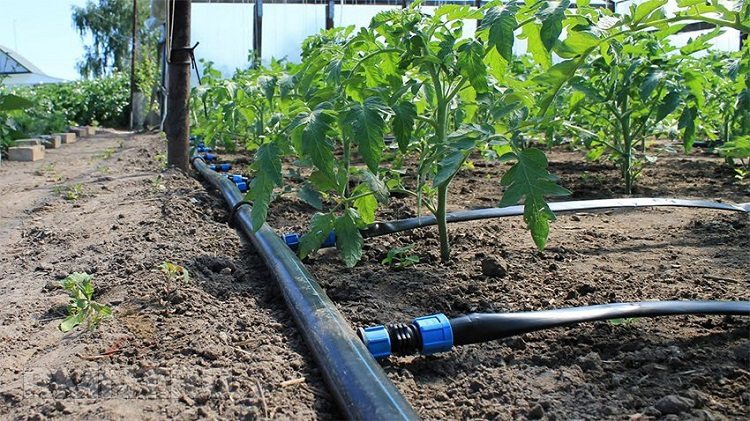
Polyethylene does not emit harmful substances into the water, so household water pipes can be created from pipes
Product Specifications
In the labeling of polyethylene pipes for water supply, there are such data:
- manufacturer name, batch number and production date;
- grade of polyethylene (PE 100+, PE 100, PE 80, PE 63);
- appointment;
- SDR value
- product diameter and wall thickness;
- manufacturing standard.
According to the criterion of nominal or working pressure, the PND pipes are divided into products operating under reduced pressure, medium pressure and pressure head. Technical and operational characteristics of the latter type are regulated by GOST 18599-2001. On the external and internal surface of the polyethylene pipe for cold water supply any extraneous inclusions are excluded.
The pressure of the medium depends on its temperature. The table shows the reduction coefficients for polyethylene PE 100.
table 2
| Water temperature (working) | Pressure reduction factor (working medium) |
| up to 20 ° С | 1 |
| 26-30 ° C | 0,87 |
| 36-40 ° C | 0,74 |
The polyethylene pipe for hot water is able to withstand temperatures up to +110 ° C. Also, such an element can be used in a system that undergoes freezing due to resistance to temperatures up to -110 ° C.
The diameter of the pipe for water supply varies from 16 to 110 mm. They are produced in bays or coils up to 1 thousand meters long and in segments 12 meters long and with a diameter of 110 to 1200 mm. Working pressure range HDPE pipes for water ranges from 10 to 25 atmospheres.
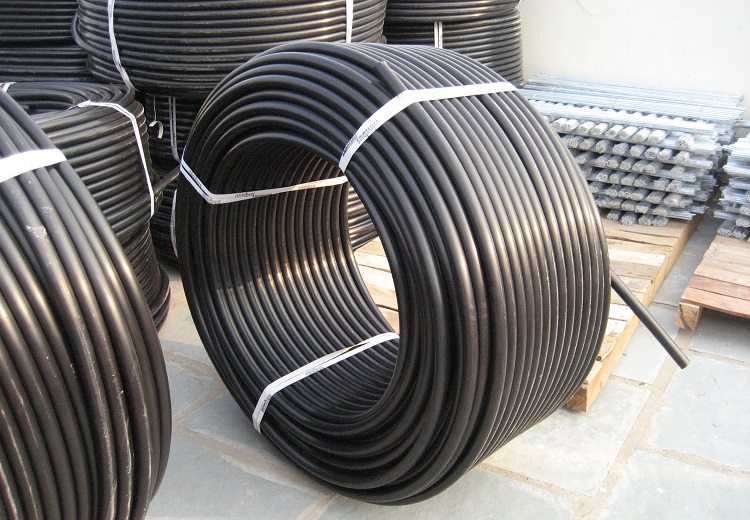
Small diameter products are very flexible and are delivered in bays; up to 1000 meters of pipe is placed in one such coil
Networks of cold and hot water supply using HDPE pipes
HDPE pipes for drinking water grade PE 63 usually have a diameter of up to 6 cm and a wall thickness of up to 4.5 mm. The value of the working pressure must be greater than 1 MPa. The supply of drinking water can be arranged by pipes of other grades of polyethylene, if marked with a strip of blue. However, such products usually have a large diameter, which is not always convenient for installation of home water supply.
Note! High-tech HDPE pipes for hot water supply are produced from improved grades PE 80, PE 100, PE 100+. They are characterized by additional marking of PE-RT.
The main material is cross-linked polyethylene capable of withstanding temperatures of over 90 ° C. During operation, it does not lose its characteristics and maintains durability and strength.
For hot water PND pipe is single-layer and multi-layer. Strengthening the properties of polyethylene gives the addition of aluminum foil, steel, polypropylene polymers to the material, as well as fiberglass reinforcement. Installation of hot water can be carried out by pipes PN 20, designed for a working pressure of 2 MPa, temperature up to 110 ° C and reinforced with fiberglass, or PN 25 - pressure 2.5 MPa, temperature up to 75 ° C, reinforced with foil.
Methods for installing polyethylene pipes
Pipe connection largely depends on their size and purpose of the pipeline.
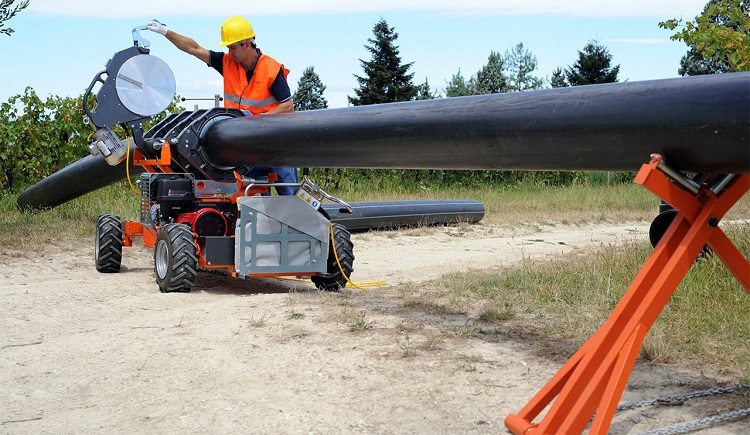
Pipes with a diameter over 110 mm are connected by hot welding using a welding machine or electrofusion
To date, 3 installation methods are used:
- via compression fittings;
- butt welding;
- electrofusion welding.
The choice of method depends on specific situations. For example, HDPE products with a diameter above 110 mm are often joined by welding. Couplings are usually used when working with low temperature conditions. For turns and branching of HDPE pipes, the system uses welded and cast fitting.
Installation of HDPE pipes for hot water supply involves taking into account such features:
- network laying depth should be lower than no more than 20 centimeters of the depth of freezing of the earth;
- if the PND of products is welded on a trench, the width of its bottom must be arranged 40 cm more than the diameter of the pipeline;
- water supply device with HDPE pipes involves filling them in a trench first with a layer of sand about 30 cm, and then with soil.
The selected compression fittings for the connection must be suitable for the type of pipe used and for the loads.
HDPE pipe welding
Welding equipment is used to create an integral connection. This technology is suitable if the pipeline is operated under pressure. Butt welding involves connecting pipes with a diameter of 50 mm or more. The ends of the products are heated and fastened under a press. The resulting monolithic compound is not inferior in strength to metal structures.
Details are firmly fixed in apparatus, and a heating plate is brought to them. After reaching the melting temperature, the tool is removed, and the ends of the pipes are pressed under pressure. The extraction of the joints occurs after the seam has completely cooled.
Note! Parts to be welded must have a wall thickness greater than 5 mm. The ambient temperature at which welding can be carried out is +15 - +45 ° C.
Electrofusion welding is in demand when pipelines withstand 16 atmospheres of pressure. After trimming the ends of the pipes, it is put on the end of the product couplinginto which the electric heater is laid. It is used to melt the polymer. Cooling, it turns monolithic design.
Polyethylene pipes are well suited for cold water supply systems (with carrier temperatures up to 40 ° C). The technical parameters of not all products made of this material are suitable for hot water. However, due to the variety, ease of installation and good performance, these pipes are widely used in everyday life and industry.
